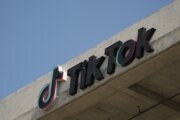The District of Columbia is often criticized as a do-nothing town full of politicians who are all talk and no action. But for the residents of the city and its neighboring suburbs, it’s just the opposite. The District is so active, in fact, that a report out today from the American College of Sports Medicine names it the fittest metropolitan area in the nation.
“It’s a city that is full of smart and driven people, who can tend to be tightly wound sometimes,” says Lexie Bohnert, a 26-year-old communications professional-turned-yoga instructor in the District who cofounded the blog Workout Wonks. “Fitness is an opportunity for them to let loose and release tension and stress from Metro rides, office politics, actual politics and general life.”
In other words, the city is just as friendly to workoutaholics as workaholics.
The ASCM’s American Fitness Index, released annually since 2008, scored 50 metropolitan areas on 31 indicators of personal fitness, such as how many people smoke, are overweight and eat at least two servings of fruit each day, as well as measures of community fitness, such as the region’s walkability, school requirements for physical education and number of pools and tennis courts. A new indicator this year assesses how many residents live within a 10-minute walk to a park.
“We wanted to find out two things: What is it about us who live in these big cities that guides our behaviors?” says Walter Thompson, a professor of kinesiology, health and nutrition at Georgia State University who chairs the Index’s Advisory Board. “But beyond that, we wanted to … really answer the question: If I live in a city and I want to be physically active, does my community support that?”
For example, someone who wants to stay fit in the Minneapolis-St. Paul region, which the ACSM ranked the country’s second fittest metropolitan area, won’t have to look far, despite the Twin Cities’ bitter weather. According to the ACSM index, residents there enjoy 2.6 recreational centers per 20,000 people — more than 2.5 times the ACSM’s “target goal” of one center per 20,000 people.
People in the Minneapolis-St. Paul area “know that from October 1 to April 1, it’s going to be cold. They know it — it happens every year,” Thompson says. “They made this conscious decision that people who want to be physically active need to be provided that space and that time indoors.”
Meanwhile, the Washington area achieved an even higher ranking due to measures such as the number of farmers markets (28.7 per 1,000,000 people), the percentage of people who take public transportation to work (14.2 percent) and the percentage of residents who live within a 10-minute walk to a park (95 percent).
“If you want to go to nice restaurant, it’s not that far away. If you want to go to a gym to work out in, it’s not that far away. If you want fresh produce … in almost every neighborhood, you can find all of these amenities within a mile of where you stand,” says Brian McGee, a personal trainer and owner of FIT360DC, a gym in the District.
Residents of some other regions don’t have that luxury. The Indianapolis area, for example, scored lowest on the ACSM index this year, thanks to factors such as its number of recreational centers (0.6 per 20,000 people), percentage of land that’s parkland (5 percent) and percentage of residents who bike or walk to work (1.8 percent). Individual behaviors in that area are relatively poor, too: 20.5 percent of residents smoke, for example, and less than 13 percent eat at least three vegetables a day.
“What’s happening in some of these cities is that they just haven’t quite gotten out of the economic downturn,” Thompson says. “So their resources that have been reduced during this time they haven’t been able to recover yet to put money back into the infrastructure of the city’s recreational facilities.”
Still, some of the lowest ranking cities should be commended for their progress, Thompson says. Oklahoma City, for one, perpetually ranked last but held its No. 48 slot this year, thanks in part to changes spearheaded by its mayor, Mick Cornett, who launched a weight-loss initiative in 2011. “He’s very dedicated to physical activity,” Thompson says.
All metropolitan areas are encouraged to use their rankings as a way to identify “opportunities for change,” says Thompson, whose hometown of Atlanta moved from 16 last year to 14 this year, in part thanks to the area’s increasing number of bike lanes and construction of the BeltLine — a stretch of pedestrian-friendly rail transit and trails being built on a 22-mile historic rail corridor. “Those are the kinds of advancements we’d like to see in cities,” Thompson says.
While policy and resources drive much of such advancements, residents too can push for positive change no matter what city they live in by getting involved in grassroots movements and contacting their local leaders, Thompson says.
“Contact city leaders and tell them that ‘We want to be fit, we want to exercise regularly, but our parks aren’t safe, they aren’t well-lit, there aren’t enough bike lanes,'” he says. “Each one of these 31 indicators can change.”
More from U.S. News
Easy Ways to Get 10,000 Steps Per Day
Summer Workouts: How to Handle the Heat
7 Mind-Blowing Benefits of Exercise
Washington, D.C. Ranks the Fittest City in America originally appeared on usnews.com







